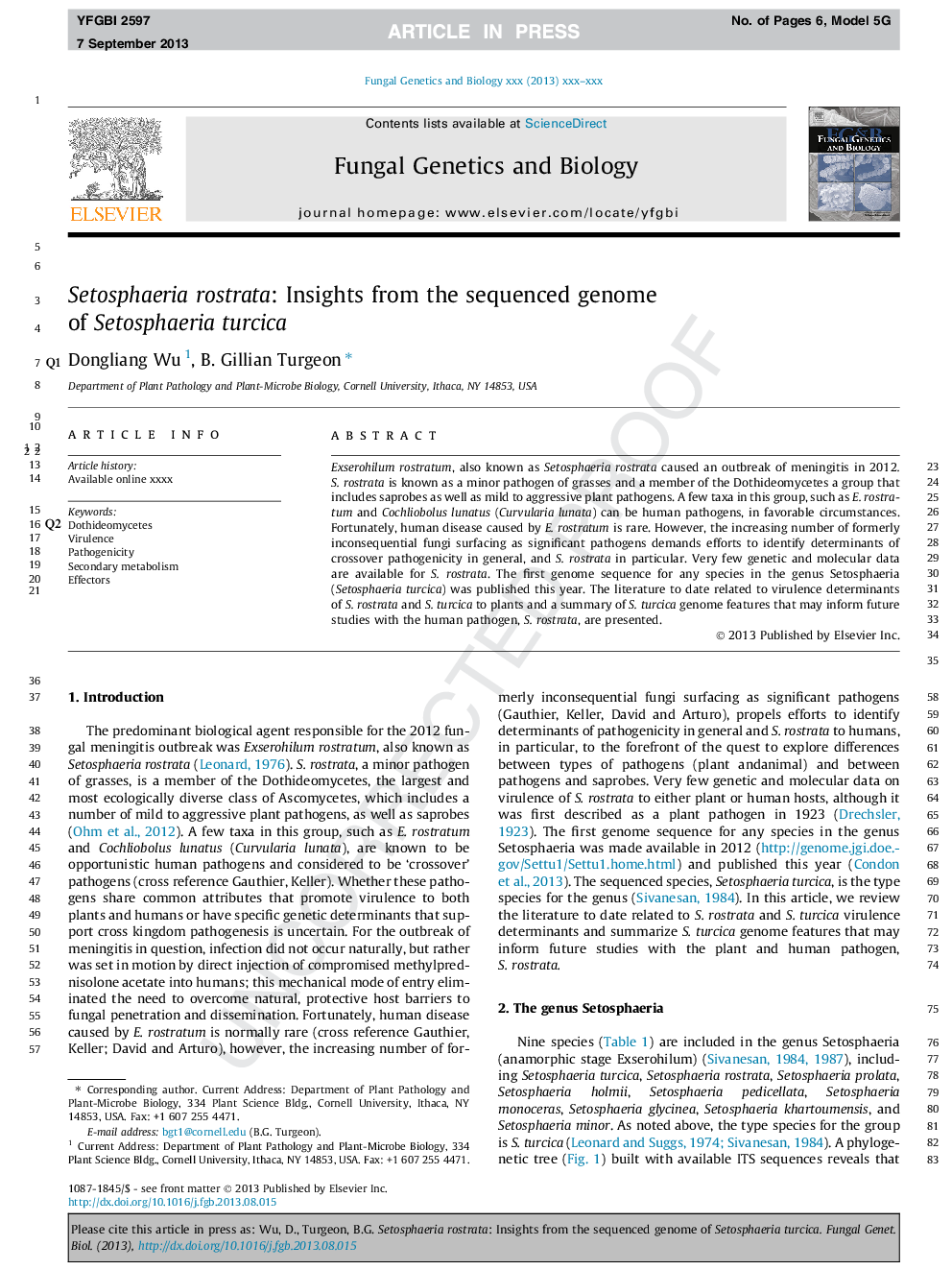| Article ID | Journal | Published Year | Pages | File Type |
|---|---|---|---|---|
| 8470947 | Fungal Genetics and Biology | 2013 | 6 Pages |
Abstract
Exserohilum rostratum, also known as Setosphaeria rostrata caused an outbreak of meningitis in 2012. S. rostrata is known as a minor pathogen of grasses and a member of the Dothideomycetes, a group that includes saprobes as well as mild to aggressive plant pathogens. A few taxa in this group, such as E. rostratum and Cochliobolus lunatus (Curvularia lunata) can be human pathogens, in favorable circumstances. Fortunately, human disease caused by E. rostratum is rare. However, the increasing number of formerly inconsequential fungi surfacing as significant pathogens demands efforts to identify determinants of crossover pathogenicity in general, and S. rostrata in particular. Very few genetic and molecular data are available for S. rostrata. The first genome sequence for any species in the genus Setosphaeria (Setosphaeria turcica) was published this year. The literature to date related to virulence determinants of S. rostrata and S. turcica to plants and a summary of S. turcica genome features that may inform future studies with the human pathogen, S. rostrata, are presented.
Related Topics
Life Sciences
Biochemistry, Genetics and Molecular Biology
Cell Biology
Authors
Dongliang Wu, B. Gillian Turgeon,
